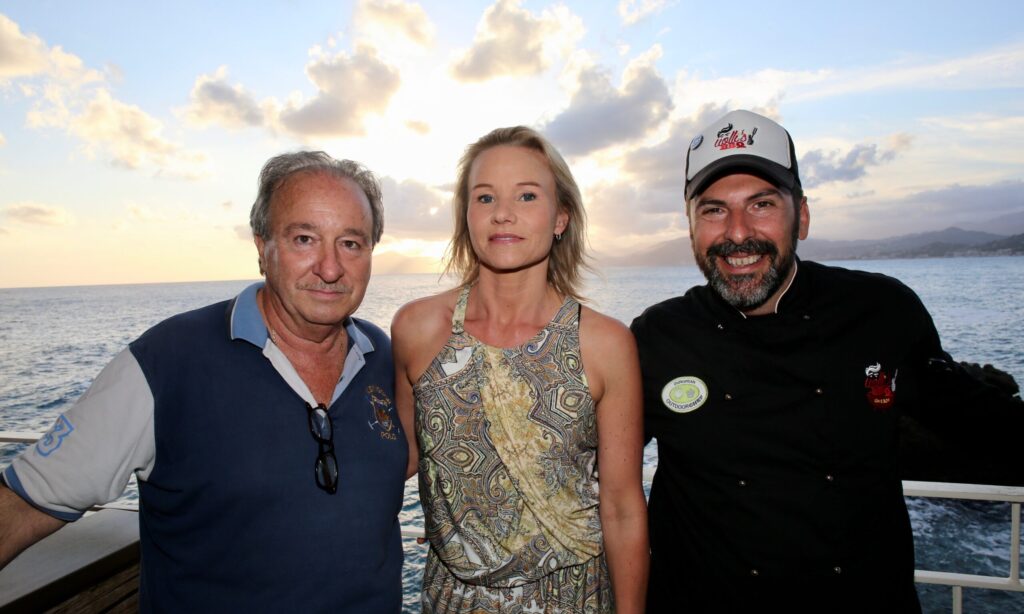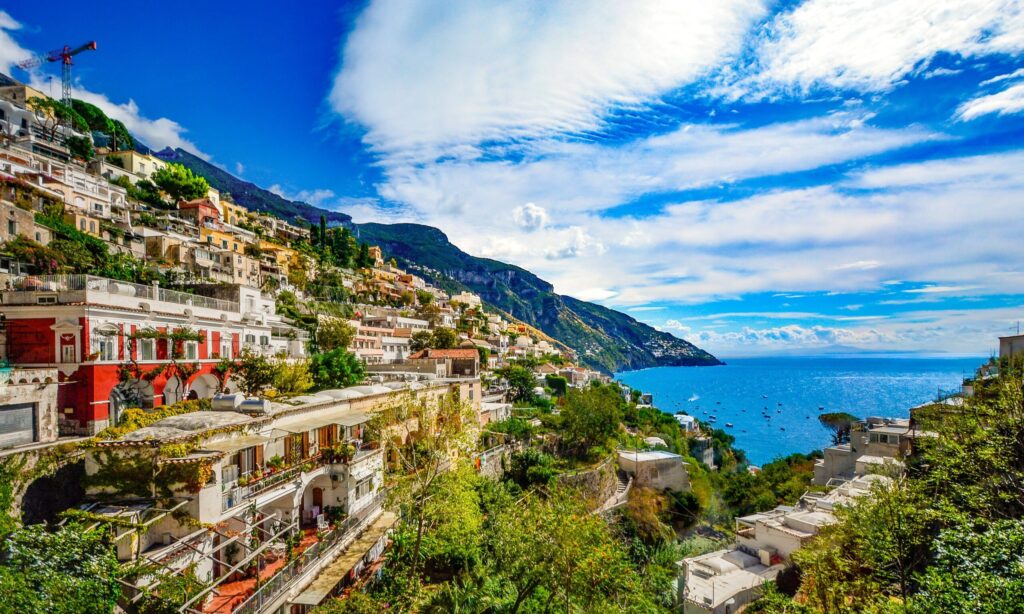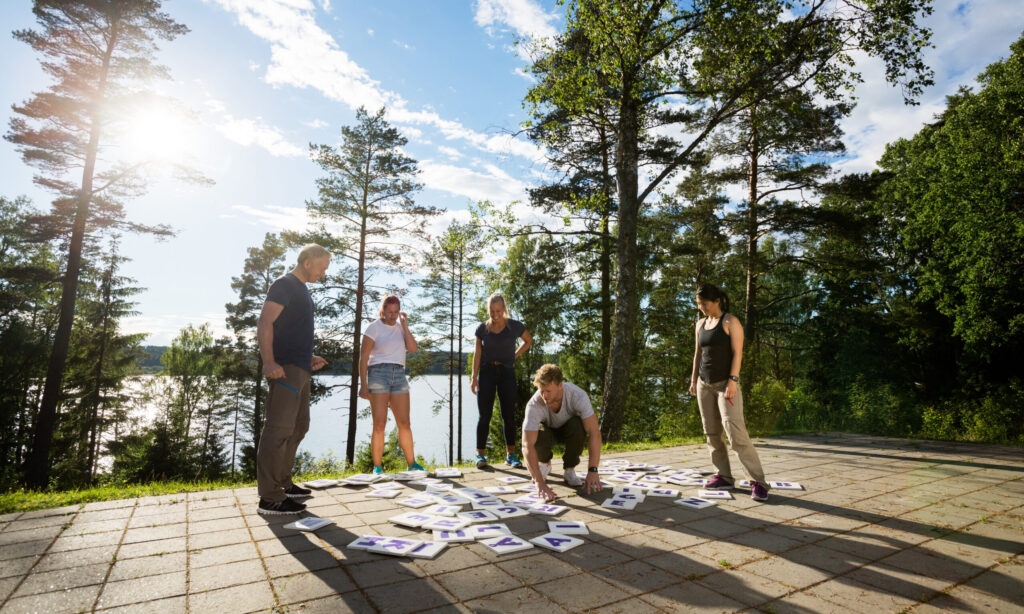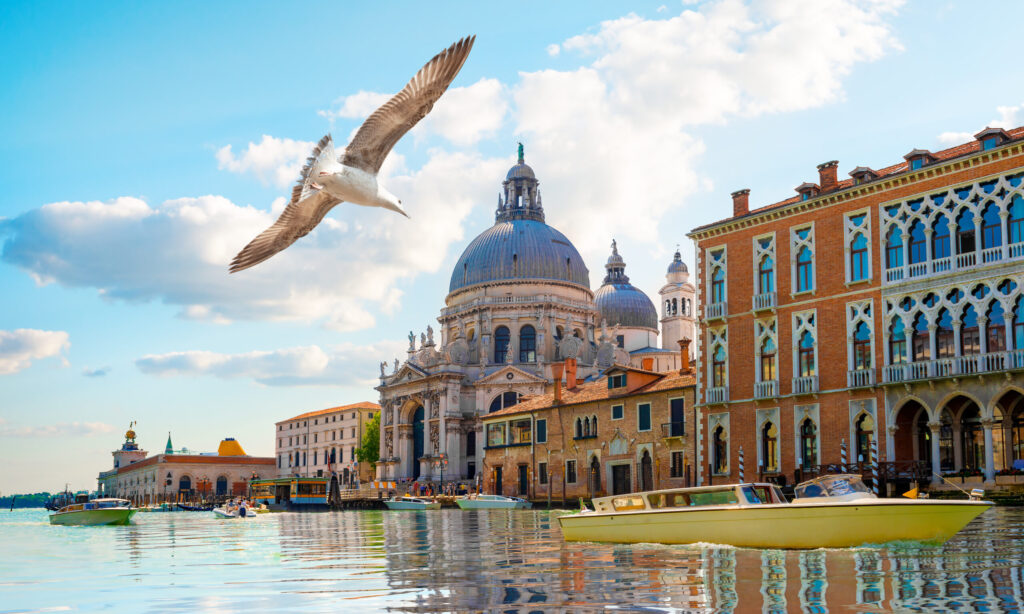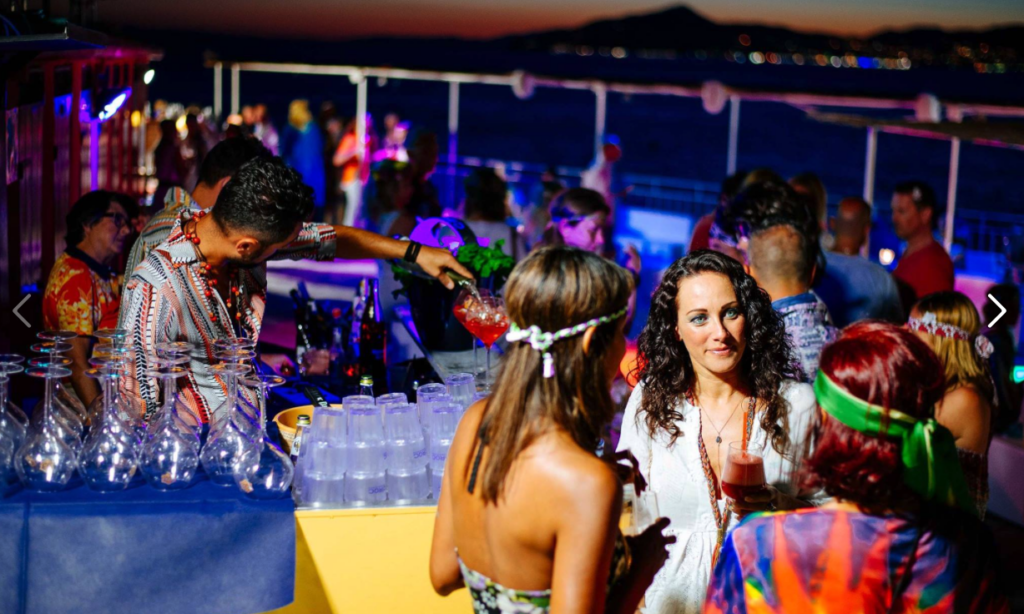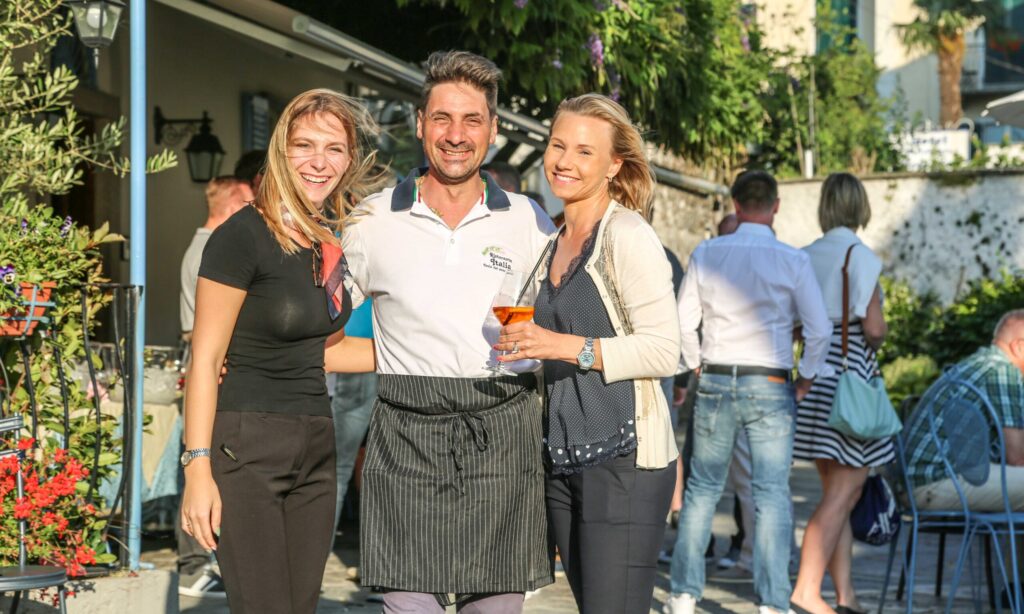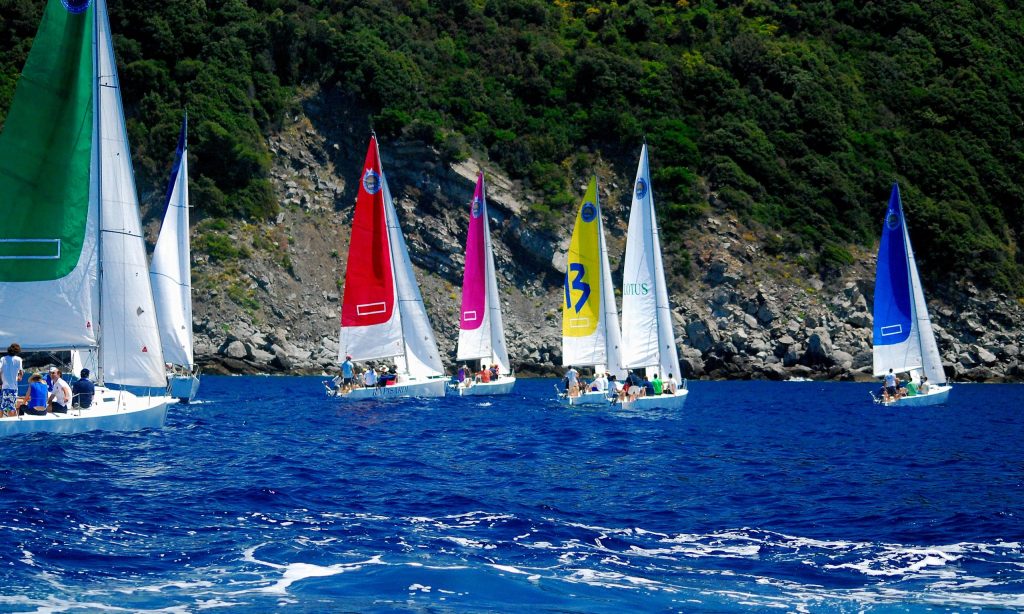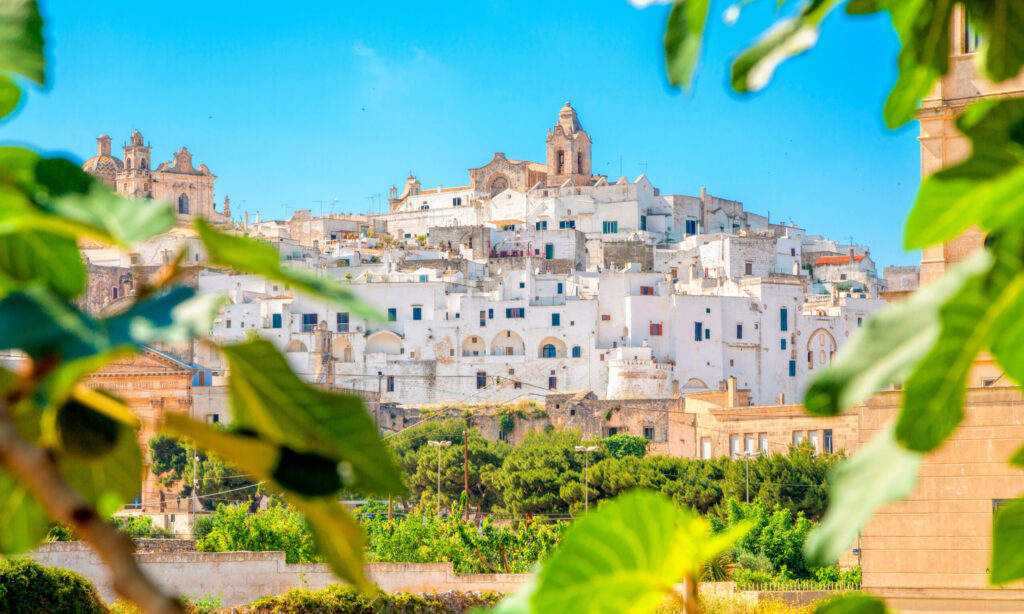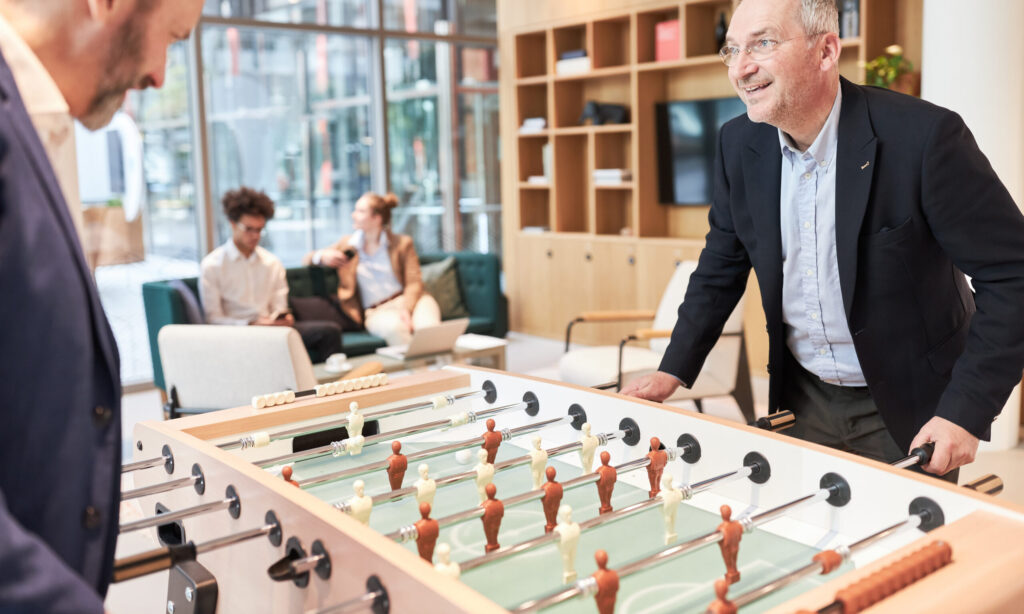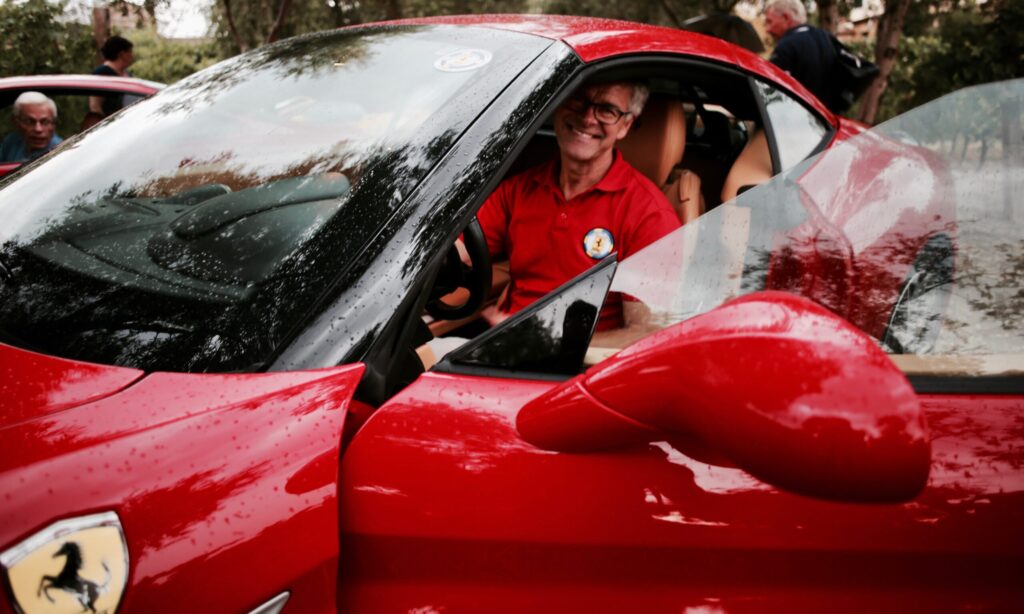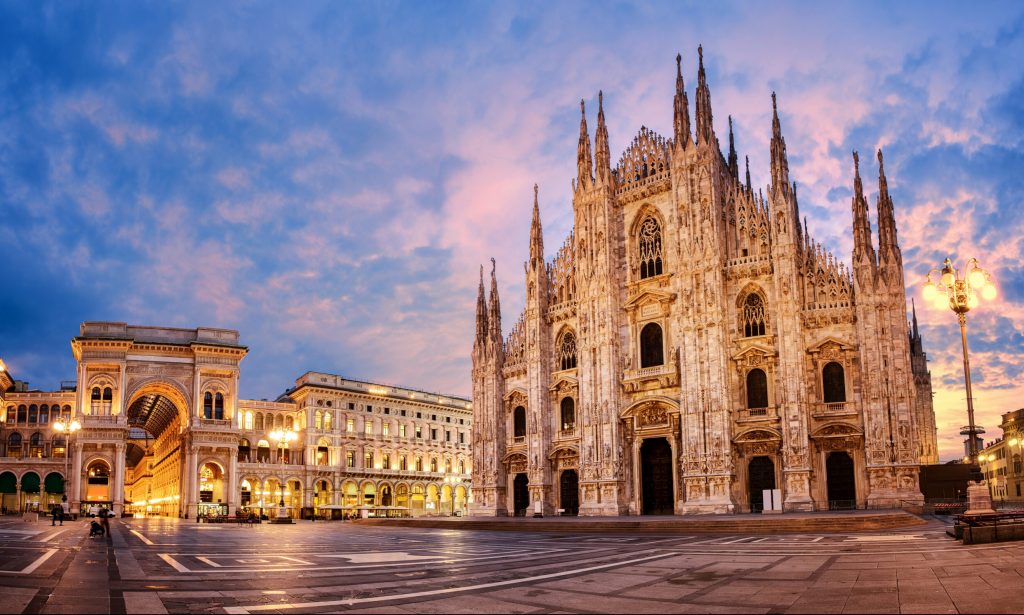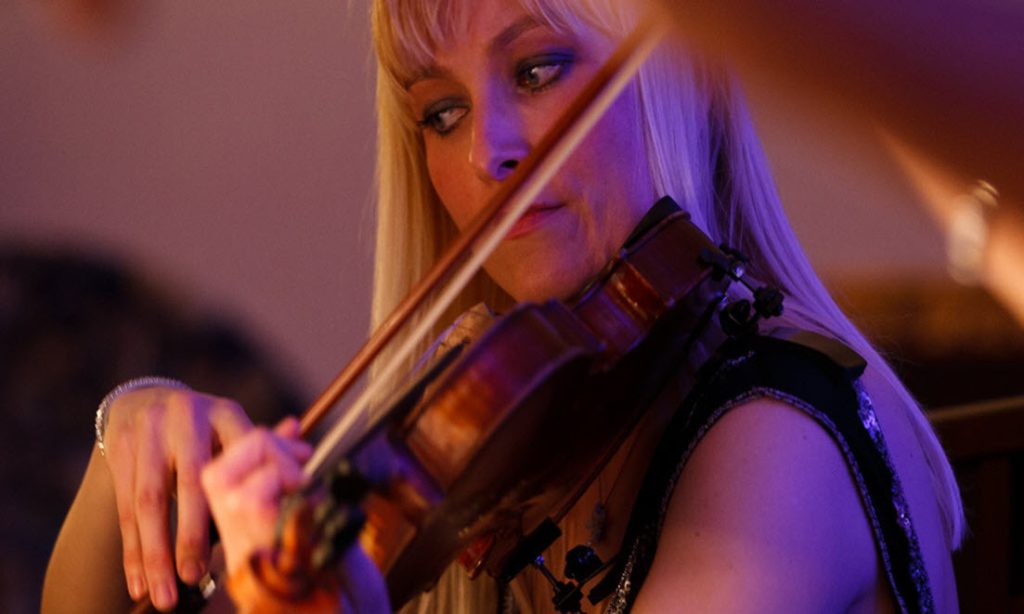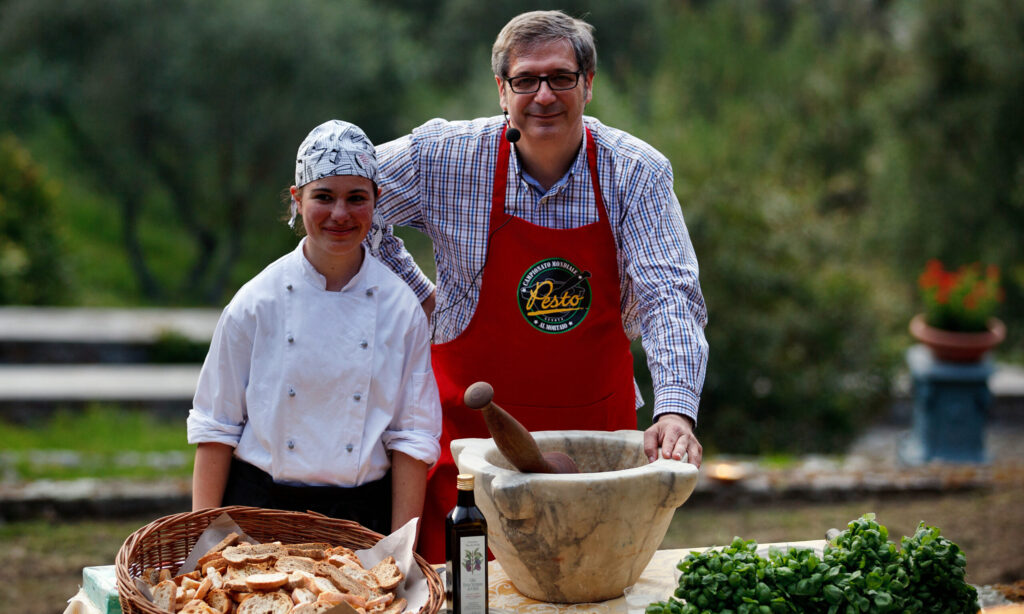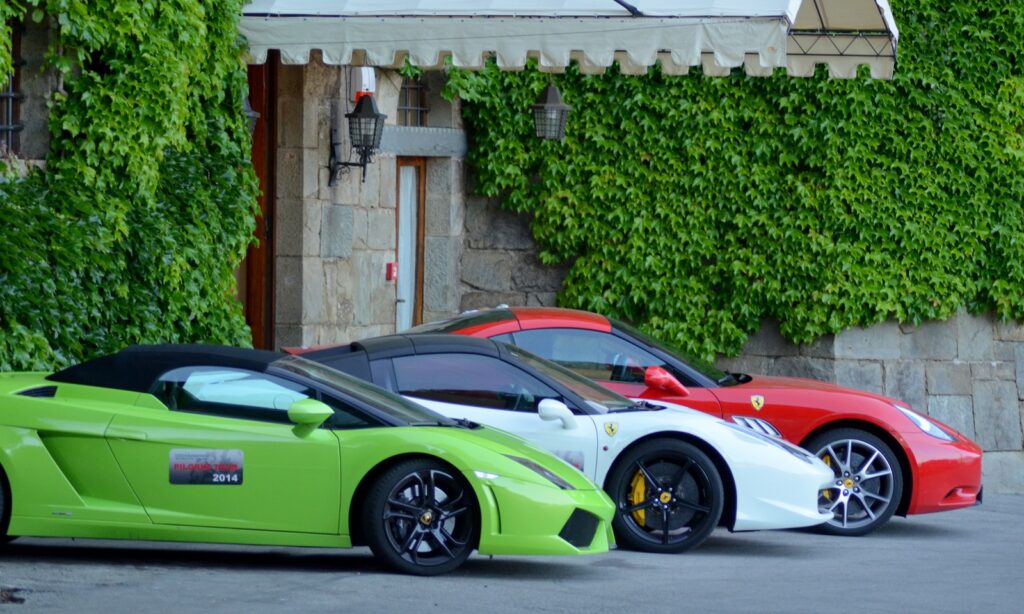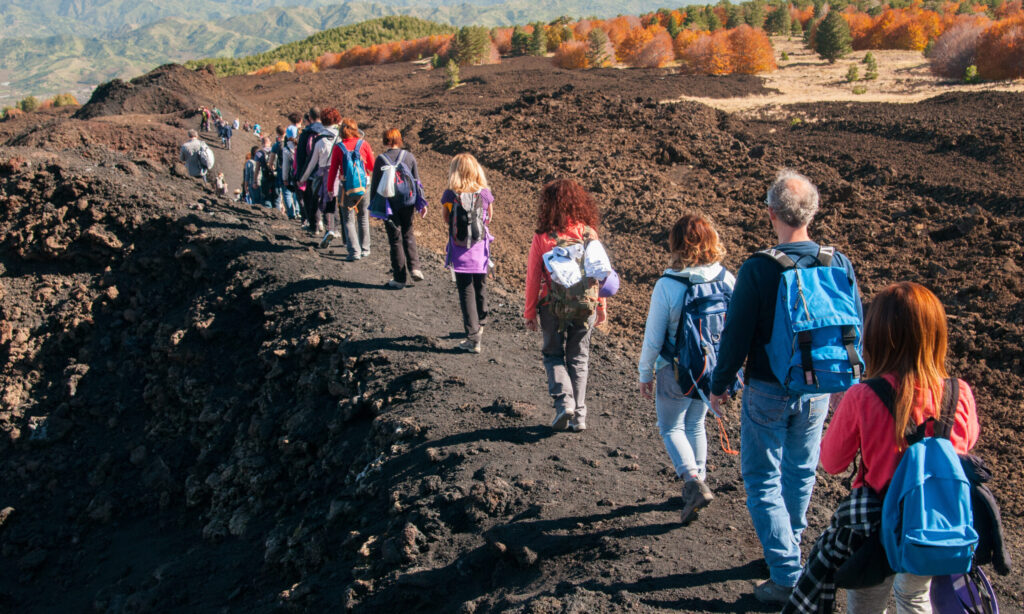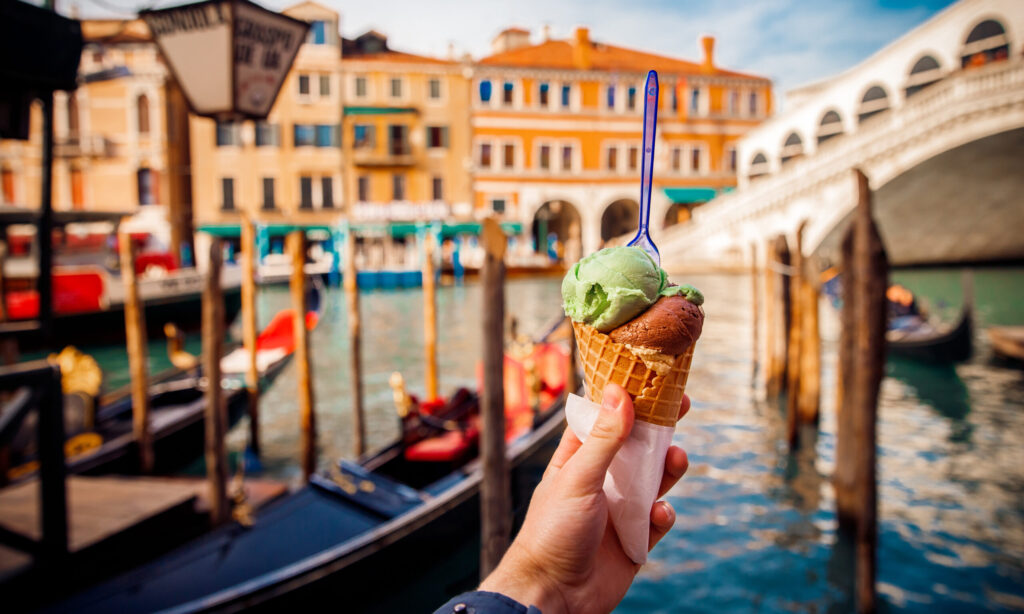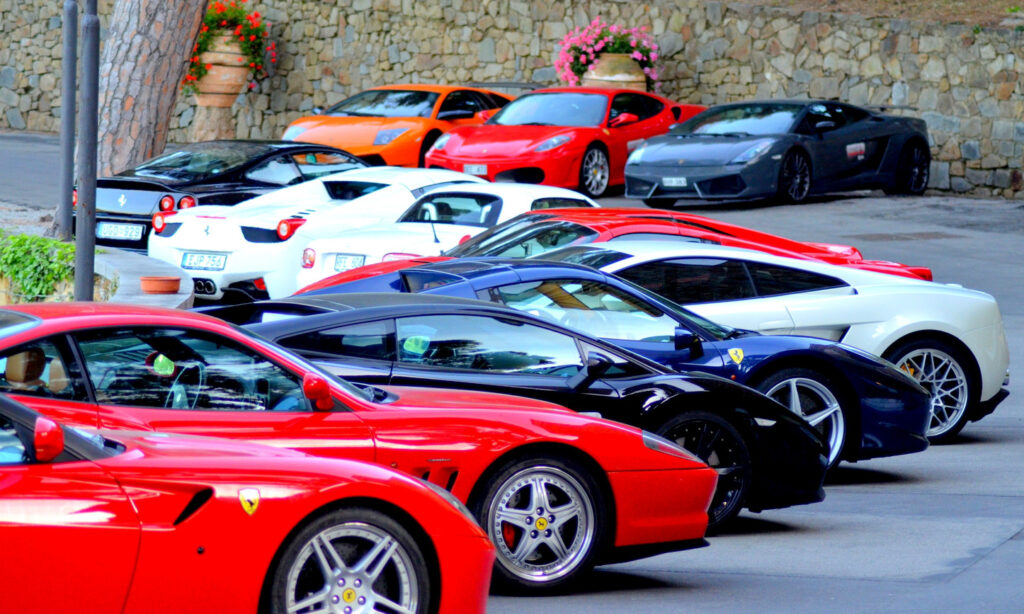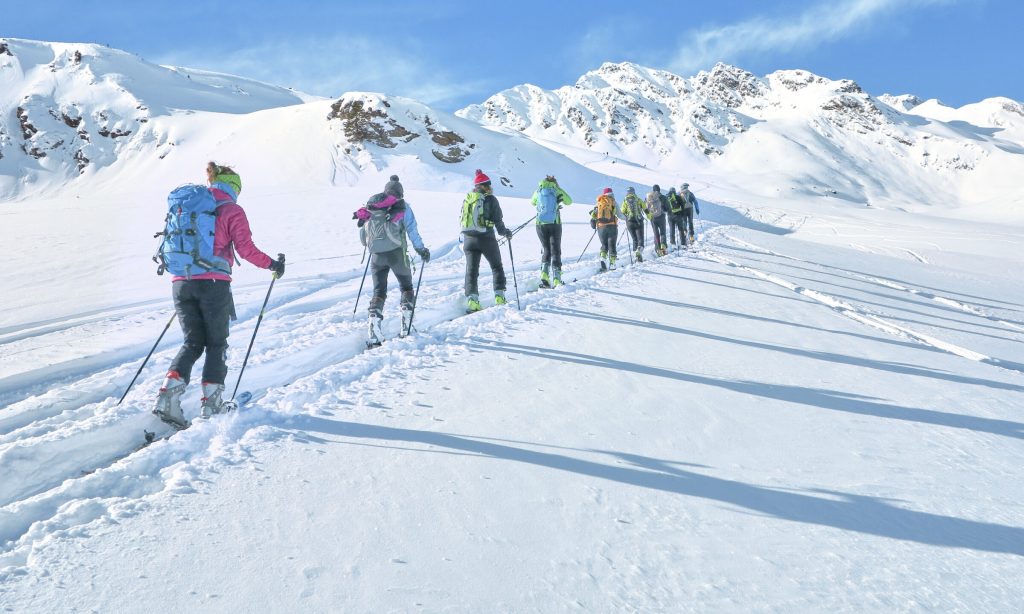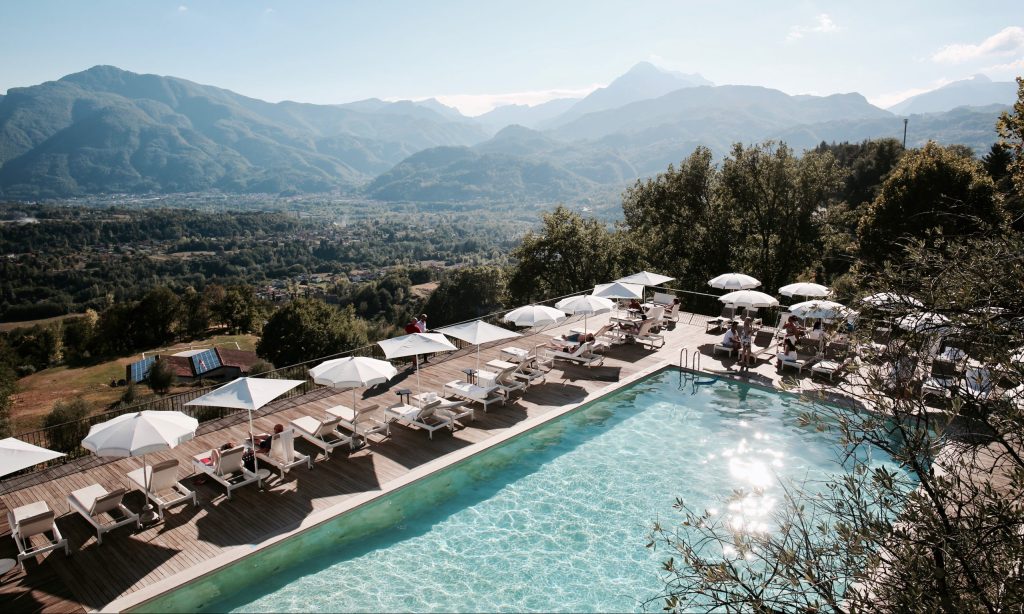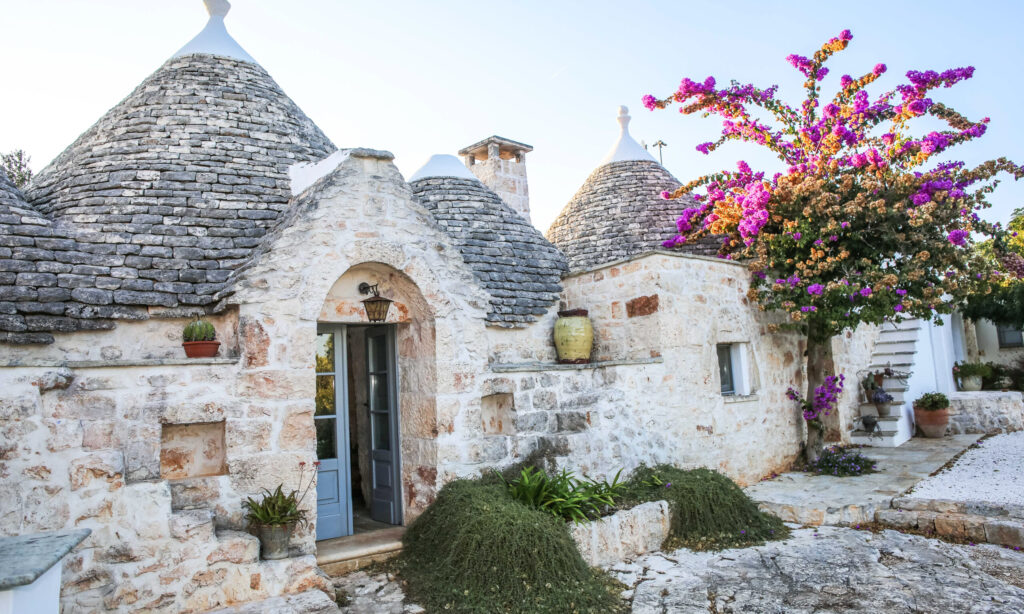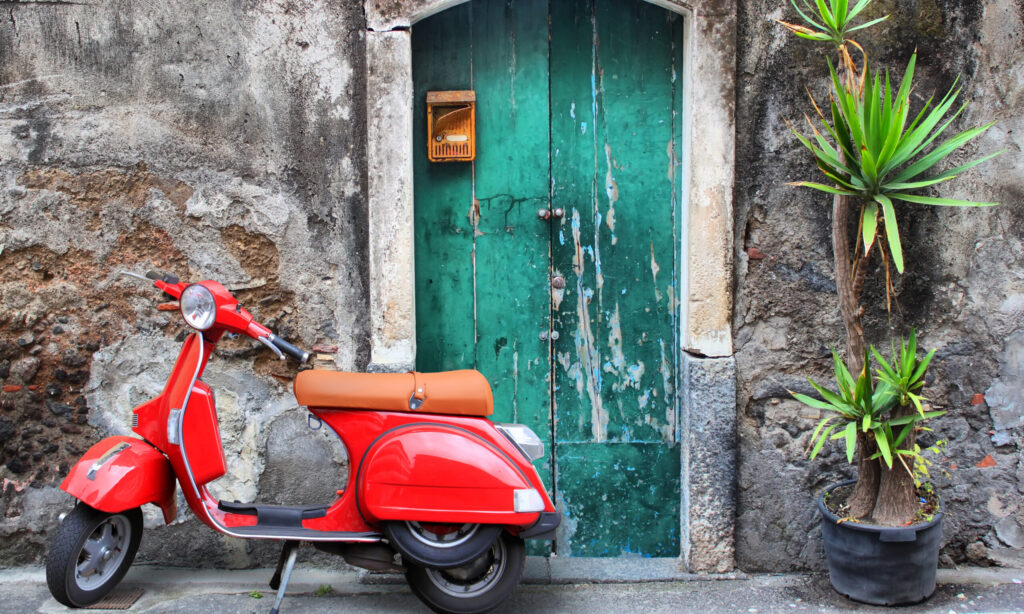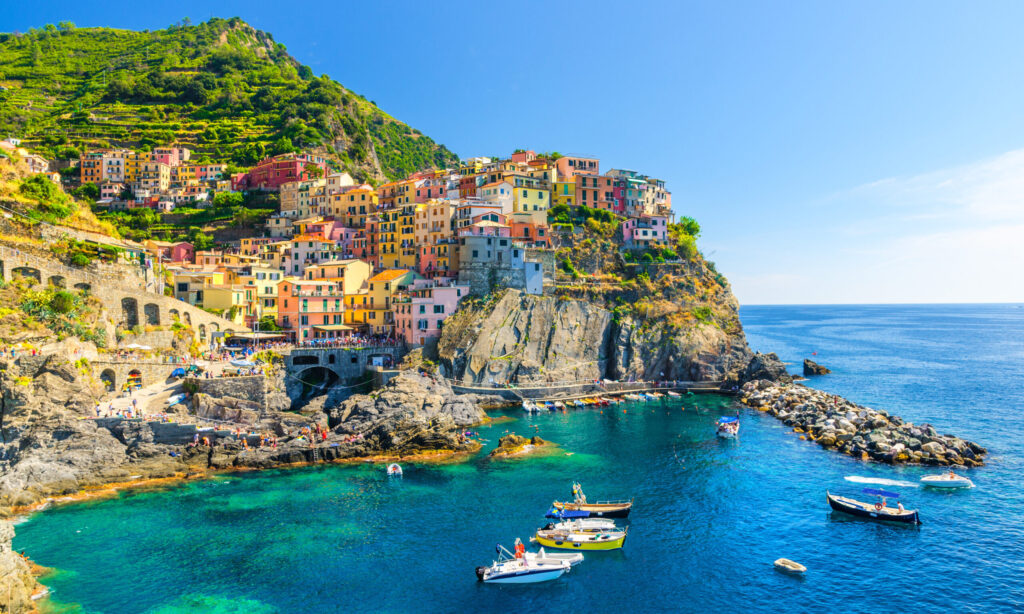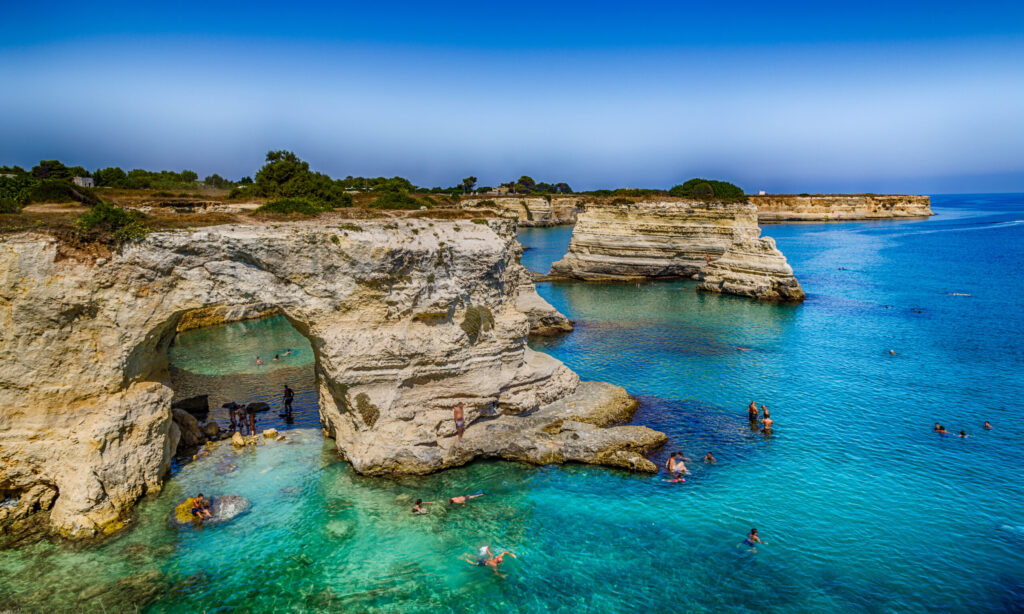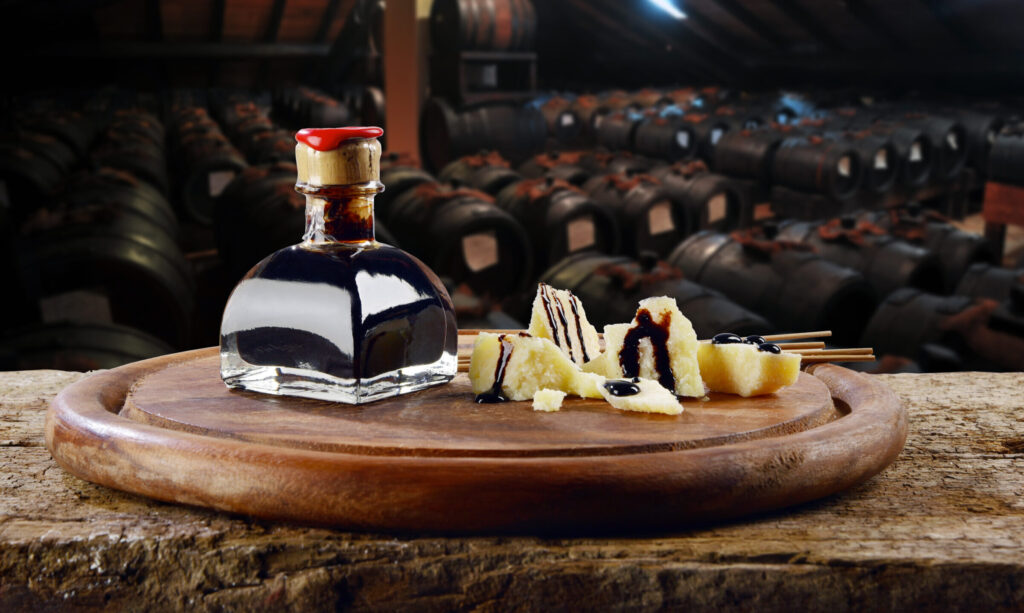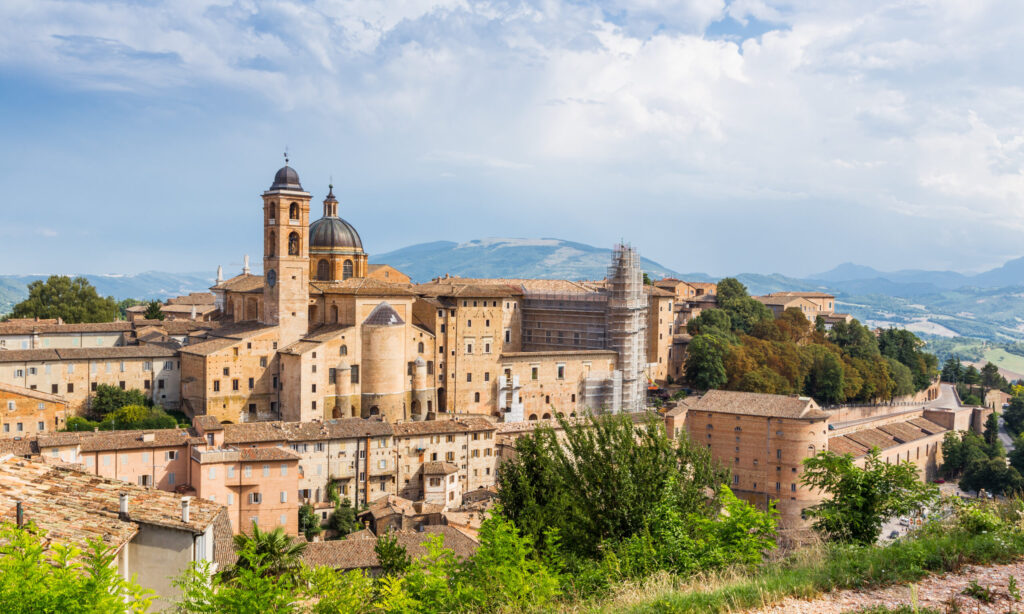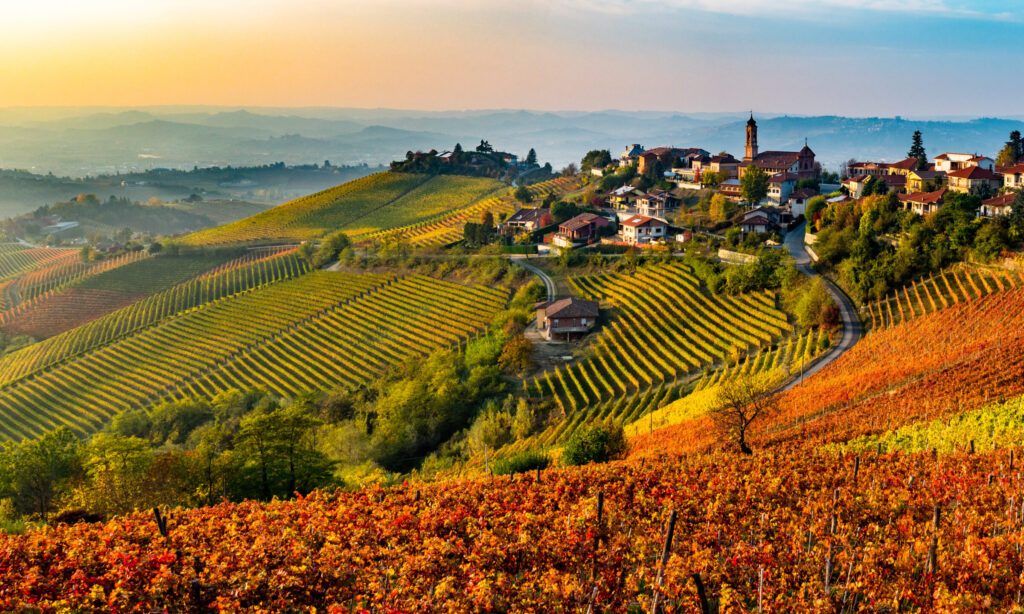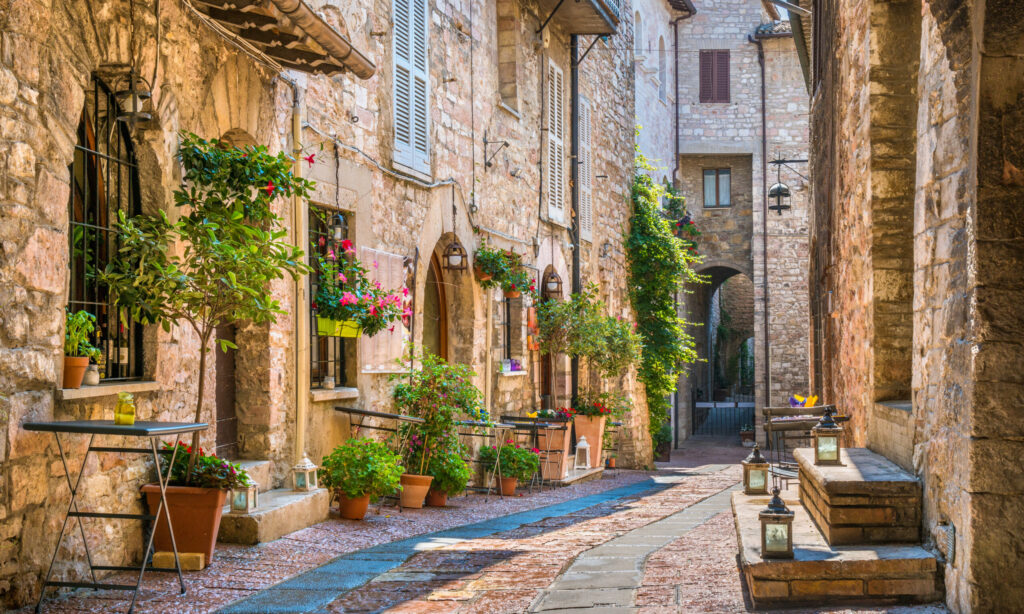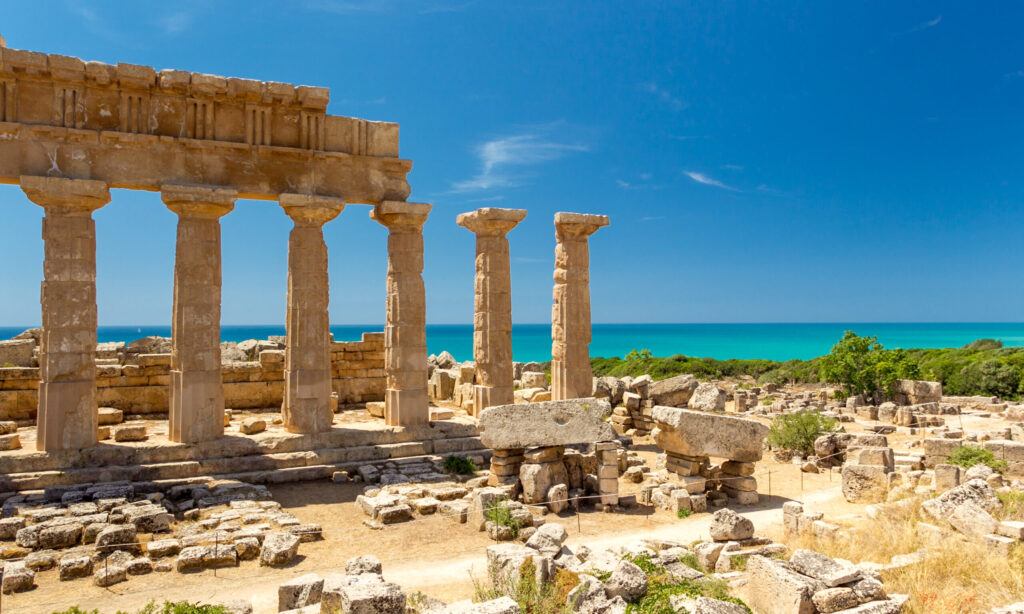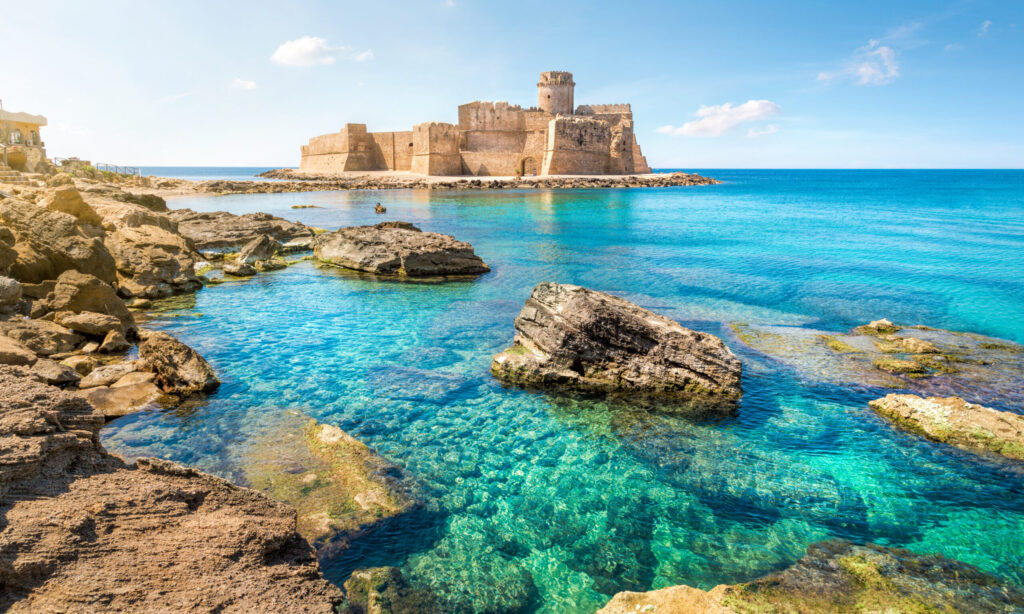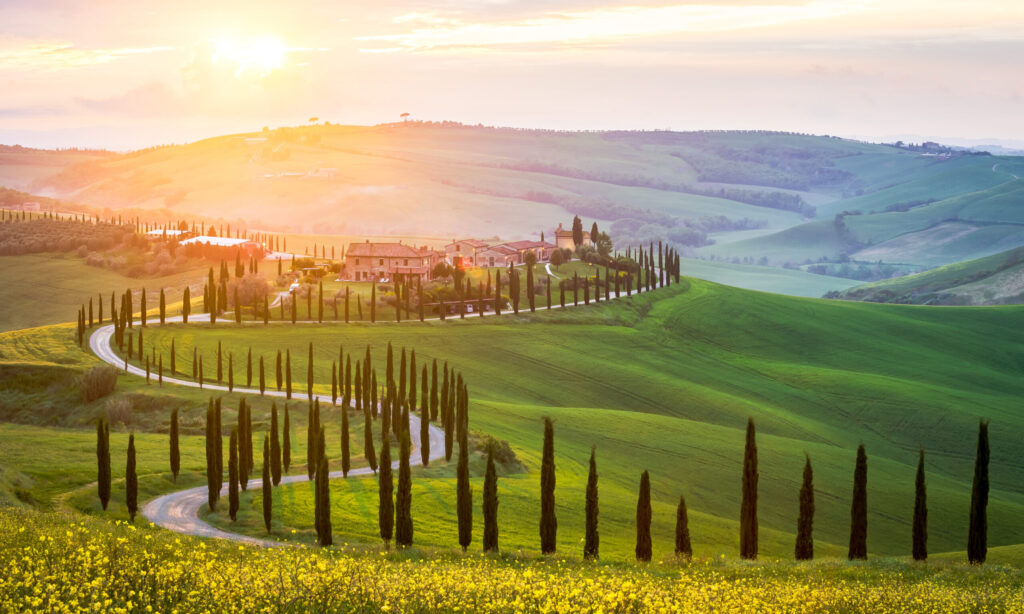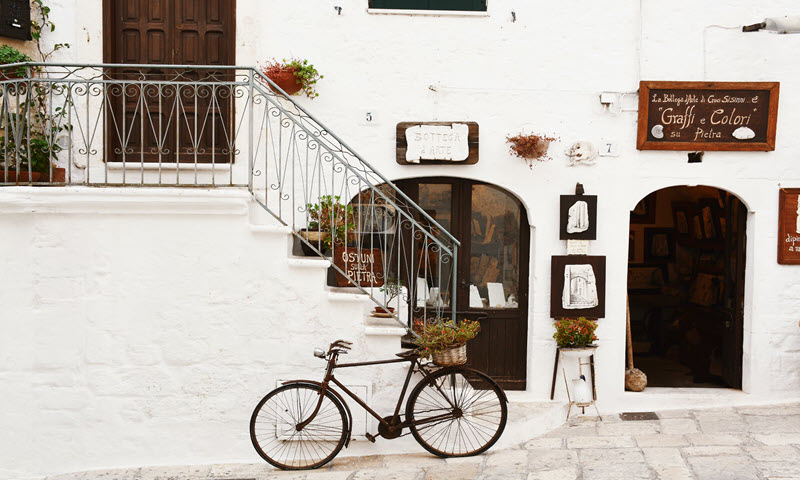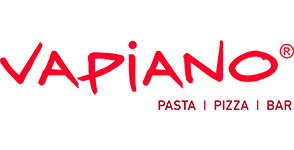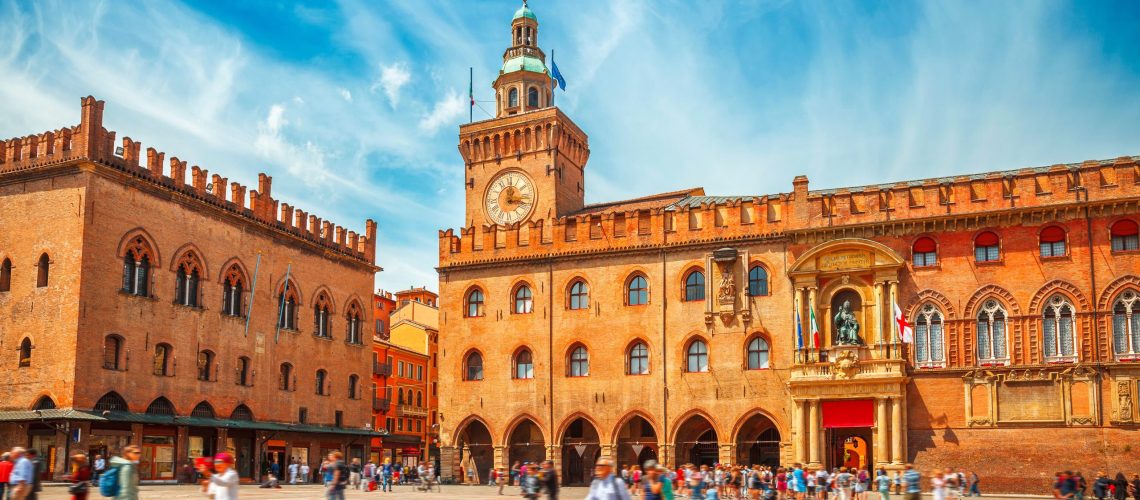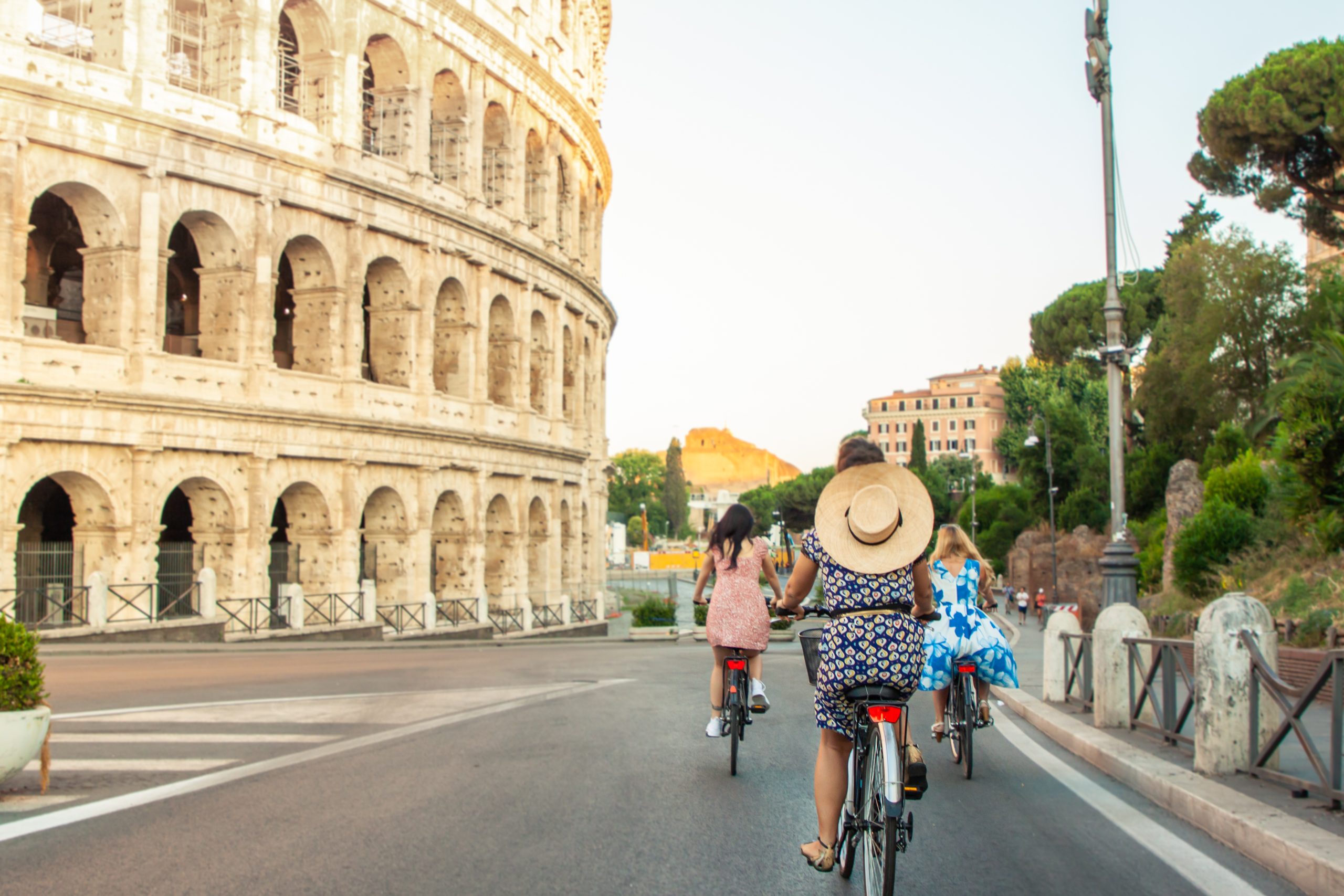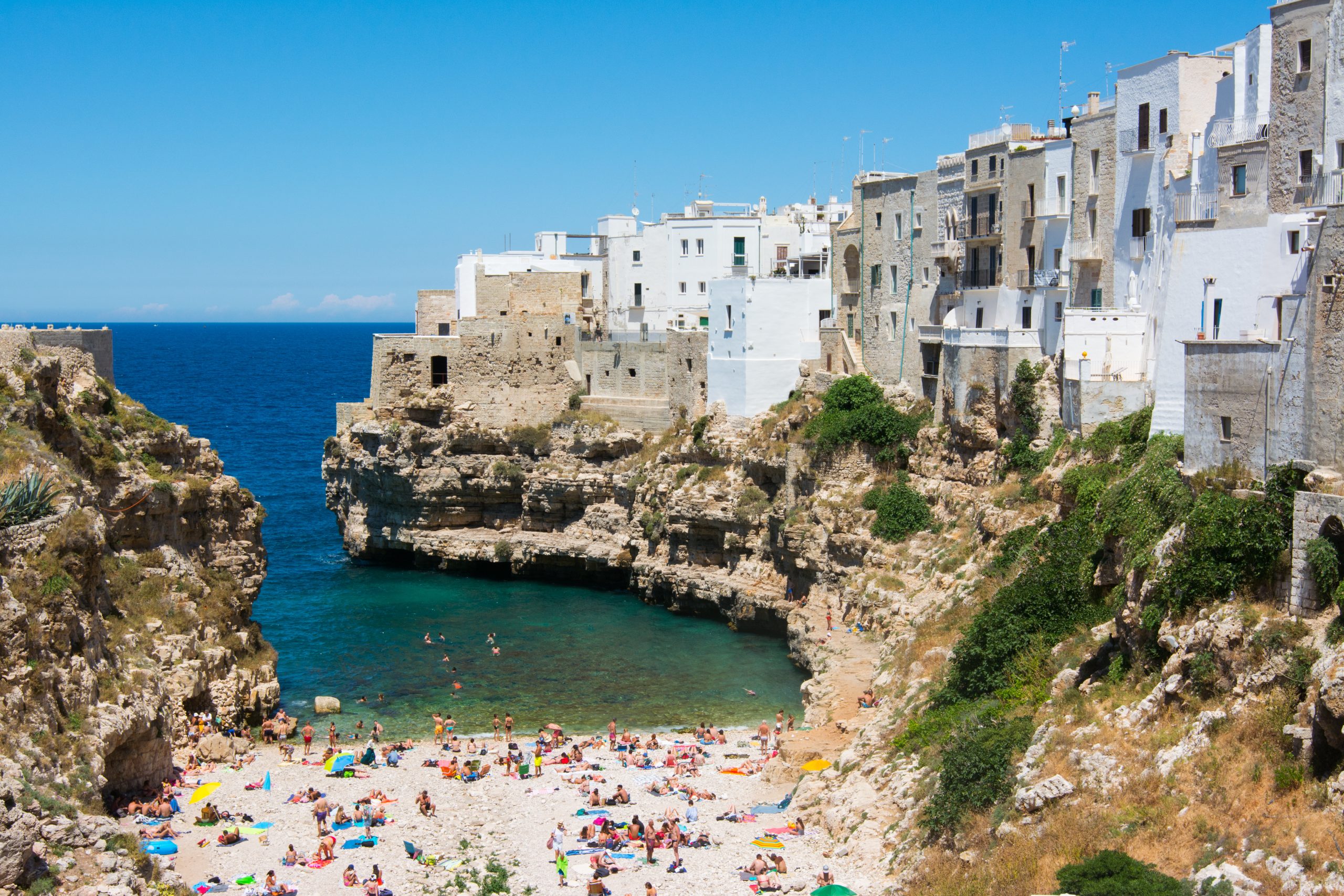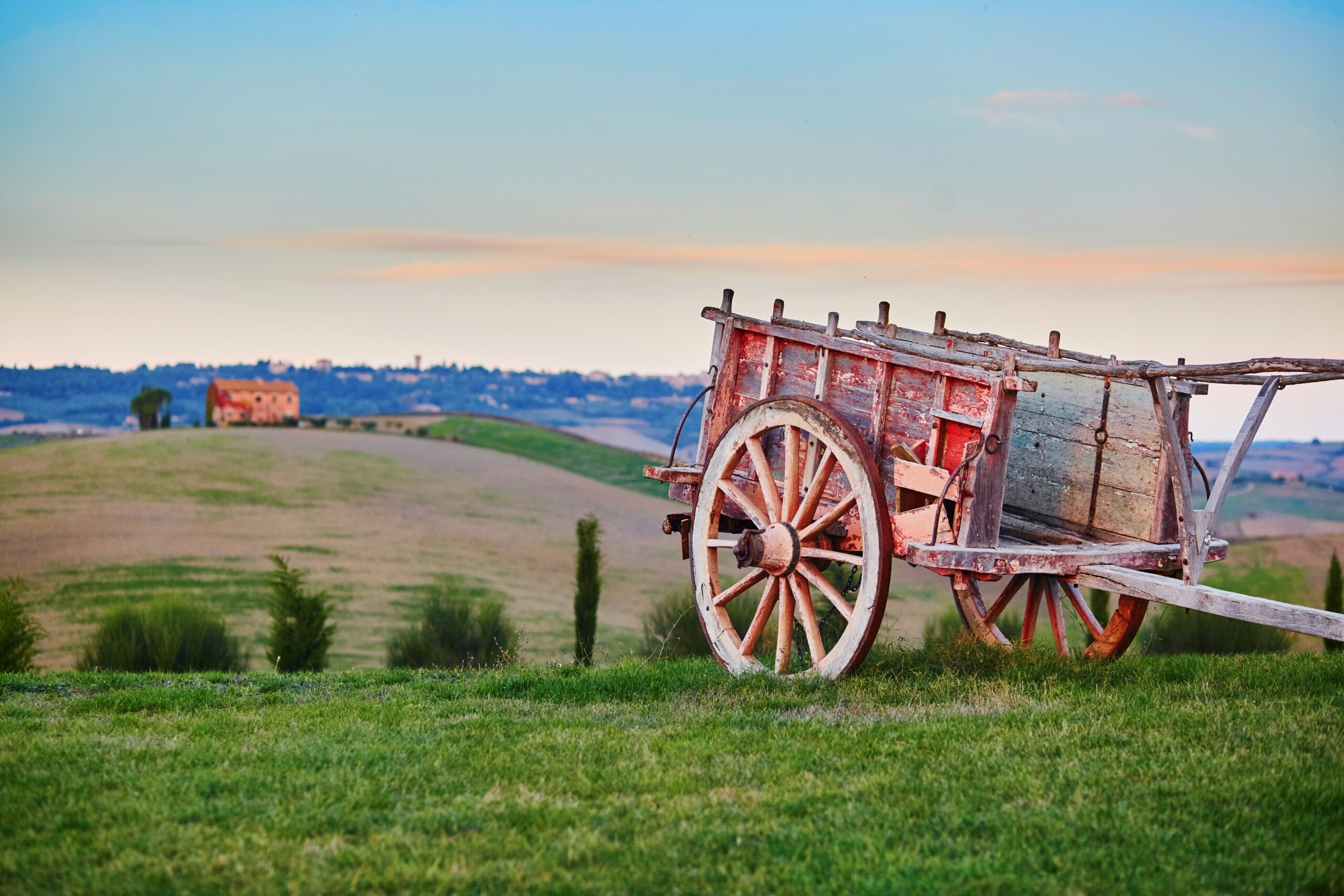Discover the hidden gems of Bologna and its surrounding areas through the eyes of a local Italian. In this insightful interview, gain insider knowledge and recommendations for an authentic and memorable tour of this historic city and its surroundings.
DAY 1 AND 2 – BOLOGNA
Bologna is one of the most beautiful and important medieval cities in Italy. It is also known as “La Dotta”, “La Grassa” and “La Rossa”. La Dotta (the wise one) to be a very important university city; La Grassa (the fat one) for its top-level food and wine and La Rossa (the red one) for the color of the roofs of houses throughout the city.
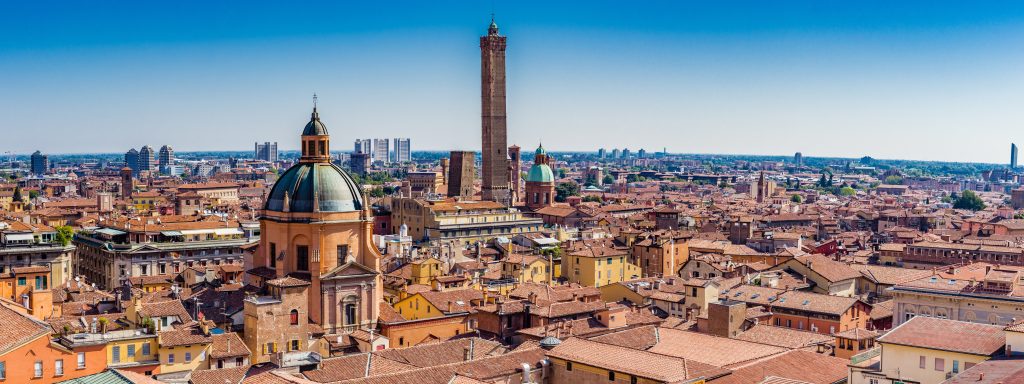
Stay in the heart of history
The historic centre is absolutely the best area to stay in Bologna! It is the place where the major monuments of the city are concentrated, such as the Torre degli Asinelli, the Church of San Petronio and the Fountain of Neptune. Although housing may be more expensive than in other areas, it is definitely the most comfortable one. Especially if you have a few days to spend in the city. Besides this, in the evening you don’t have to move by car and you can reach restaurants in a few minutes by foot. In fact Bologna is covered by porticoes for almost 40 kilometres. Porticoes are not only an architectural element but represent the very essence and the mood of Bologna. It is also a perfect refuge from the sun in summer time and in the cold seasons from the rain.
The vibrant heart of the historic center is Piazza Maggiore, a bustling square surrounded by charming medieval streets lined with shops and alleys. Overlooking this scene are restaurants serving local dishes and historic shops, adding to the square’s lively atmosphere.
Recommended accommodations
Start your visit of the historic centre from Via Indipendenza, the shopping street which directly connects the railway station to the wonderful Piazza Maggiore.
The beating heart of the city, Piazza Maggiore (or Piazza Grande – Great Square – as the Bolognese people call it) is the center of civil and religious life in Bologna. It is famous for the Fountain of Neptune, which overlooks the most important buildings of the medieval city: the fourteenth-century Palazzo Comunale (the town Hall), the sixteenth-century Palazzo dei Banchi and the imposing Basilica of San Petronio in front of which is located the Palace of the Podestà. Dominant figure of the square, Neptune with its fountain was promoted by Cardinal Borromeo with the aim of offering a new improved image to the adjacent Piazza Maggiore. The statue is majestic and is one of the most photographed monuments by tourists in Bologna.
The Basilica of San Petronio (free entrance) is the most important church in Bologna and it’s the fifth largest church in the world. This is the last big Gothic church realized in Italy, characterised by a Latin cross plan with three naves and chapels. The construction work on the Basilica began in 1390 but went on for centuries. If you visit the Basilica of San Petronio you cannot help but notice the sundial built by Cassini to demonstrate that it was the Earth that revolved around the Sun, and not vice versa as it was the belief of the time. The interior also houses the oldest functioning organ in Italy.
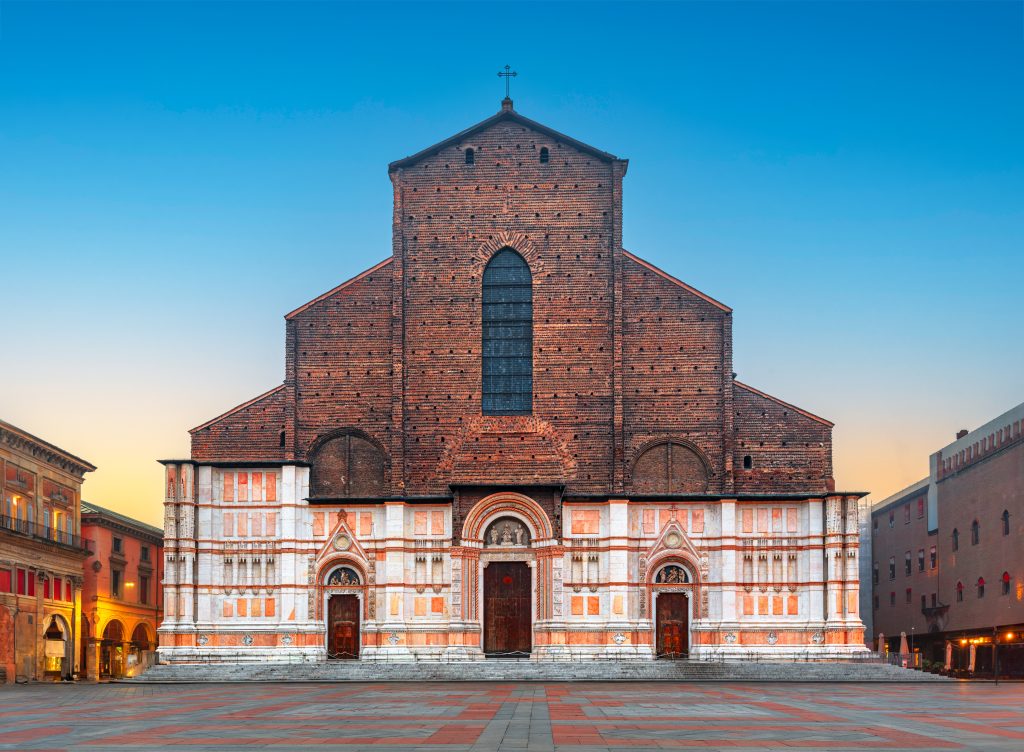

You can continue your tour visiting the streets of the “Quadrilatero”, behind Piazza Maggiore. This district has hosted the artisan and commercial activities of the city since the Middle Ages. This area is delimited by Piazza Maggiore, via Rizzoli, via Castiglione, and via Farini. The beautiful streets that make it up have retained their ancient appearance, and many old signs stand the corners of the streets unchanged. Here you can browse through the stands and old shops selling all sorts of delicacies and find all the most famous Bolognese specialties. Getting lost in these romantic streets is undoubtedly one of the things to do in Bologna.
A tip: avoid having a drink, or even having dinner, in the streets of the Quadrilatero: the quality of the food is not high, while the bill is expensive.
Savor the Renowned Cuisine of Bologna
Bologna is renowned for its cuisine, varied and abundant. Tortellini are certainly the most famous of the typical dishes of Bologna and can be found in most restaurants. Also, if they are often served in other ways, ask for a plate of Tortellini in broth. According to the original recipe, Tortellini are prepared by filling a base of fresh egg pasta puff pastry with a filling of meat and cheese, all rigorously of Emilian origin.
In addition to the famous Tortellini, still prepared by hand by expert pasta makers and rigorously served in broth, egg pasta and pork are the protagonists of the tables, and from the different combinations of these two elements, some typical dishes are born. Among these, the ragù, prepared with mixed pork, veal, and beef. Without a doubt, the best-known dish abroad is Tagliatelle al Ragù. The noodles are prepared with flour and eggs. Fresh egg pasta must be strictly handmade and respect precise measurements.
Green lasagna is another traditional dish from Emilia Romagna and in particular from the city of Bologna. Green is given by adding spinach to the dough. Ragout and bechamel are essential to prepare this delicious dish. Then we also have the Bolognese cutlet, covered with cheese and a slice of raw ham. Still, from pork comes mortadella, a typical salami from which the filling for Tortellini is obtained.
Cheese and Desserts
About cheese, Parmigiano Reggiano and soft cheese like stracchino and squaquerone are the most popular. Among the desserts, the famous “certosino” is to be remembered: it is a Christmas cake prepared with honey, almonds, candied fruit, pine nuts, butter, sultanas, cinnamon, and dark chocolate.
A typical street food in Bologna is the Tigelle (or Crescentine): a kind of round sandwich cooked in a special cast iron pan.
Historic Culinary Venues
Did you know that “Osteria del Sole” is one of the oldest restaurants in Italy? Probably it dates back to 1465. It is located in Vicolo Ranocchi nr. 1.
Instead, at the historic grocery store Gilberto, located in via Drapperie 5 since 1905, you can find Italian wines, sweets, jams, coffee, honey, and balsamic vinegar.
Historical markets and dining recommendations
- Osteria de’ Poeti
The Osteria de ‘Poeti is located in a small street in the historic centre. This restaurant is specialized in traditional Bolognese dishes, in a 15th-century cellar with fireplace and boasts an excellent wine selection.
Address: Via de’ Poeti, 1/b - Trattoria di via Serra
This is a place to enjoy typical dishes prepared with zero kilometer ingredients. The Trattoria di Via Serra maintains the appearance of a family-run tavern where the passion for food and kindness are the fundamental pillars.
Address: Via Luigi Serra, 9/b - Osteria al 15
Small rooms furnished with wooden tables and old furniture, dim and warm lights that highlight the exposed beams, the ceiling covered with period newspapers. What better environment to enjoy a dish of tigelle and salami? At 15 you can enjoy the simplicity of life as it used to be.
Address: Via Mirasole, 13 - Buca Manzoni
A small door and a few steps lead inside, with the appearance of an old cellar that has been carefully restored. Here, the classics of Emilian cuisine await you, where you can eat tagliatelle al ragù by candlelight in a 1300s basement with stone floors and a copper fireplace.
Address: Via Manzoni, 6/G - Drogheria della Rosa
La Drogheria della Rosa is for those who love intimacy and tradition. It is a restaurant that serves homemade pasta among jars of spices and bottles of liqueurs, in a former shop. You will be enchanted by the delicious cuisine so much that you will feel like dining in a fairytale place.
Address: Via Cartoleria, 10
Bologna boasts also several historical markets, but the most characteristic one is the Mercato di Mezzo (Middle Market), right in the heart of the city, in the Quadrilatero area. The name probably dates back to before 1400, when the area was dedicated to the grain trade. Visiting this market today means immersing yourself in the colors and flavors of the renowned Bolognese culinary tradition, in the evocative setting of medieval buildings. Here are concentrated the shops of butchers, bakers, cheesemakers and gardeners. But Mercato di Mezzo is also the name that was chosen for a brand new shopping center, a cross between the modern supermarket and the typical market of the past, located in a XIX century building inside the Quadrilatero. In this 3-storey building, for a total of 740 square meters, there is space not only for the classic food vendors, but also a craft brewery and a wine shop.
The ancient herb market is also located in the center, in via Ugo Bassi. It is not only the city’s fruit and vegetable market, but you will also find delicatessens with typical products. The area houses restaurants and bars where you can stop to eat and drink.
Do not miss also a visit to FICO, the shopping center of excellent Italian food that can be reached by bus from Bologna station (address: Via Paolo Canali nr. 8)
You can continue the visit of Bologna climbing to the top of Torre Asinelli. The towers are one of the main features of Bologna, built between the XII and XIII century. These structures had both military and noble functions: they gave prestige to the family who ordered their construction. Of the many towers that were built in the past, today less than twenty remain. The two most important towers are the Asinelli and the Garisenda towers. The Asinelli’s tower, built at the end of the 11th century, is the symbol of Bologna: Visitors, after climbed the 498 steps of the internal staircase, can reach the top of the tower which, from its 97 meters high, allows you to have a beautiful view over the city. When the weather is good it’s possible to see the sea and the Alps. A curiosity: tradition “forbids” students to climb the Torre degli Asinelli before they graduate: doing it before this academic goal seems to lead badly to the career. The Garisenda Tower is lower (47 meters) and cannot be visited.
In the city centre you can find also the Basilica of Santo Stefano. The Basilica is a complex of sacred buildings that form the “Sette Chiese” (Seven churches). Over the years, the modification and restoration works have changed the ancient appearance of the complex to reduce the number of the seven initial churches to four. The triangular Santo Stefano square, which has recently been restored to its original appearance, houses the Church of the Crucifix, the Basilica del Sepolcro, the Church of San Vitale and Sant’Agricola, the Cortile di Pilato, the Martyrium Church, the Medieval Cloister and the Museum of Santo Stefano. All very old buildings which, even if they date back to different periods, maintain a certain stylistic homogeneity, making the complex the most interesting and best preserved Romanesque monuments in Bologna.
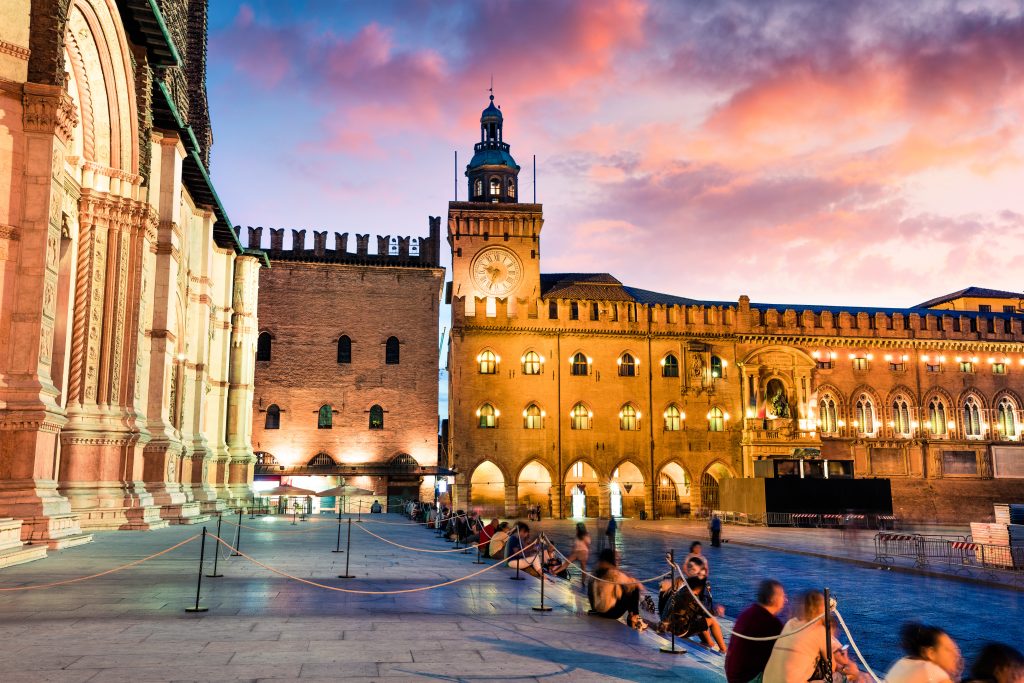

From the city centre you can hike to the Basilica of San Luca under the longest portico in the world – 3,8 km and 666 arches. The number of 666 (symbol of the devil) would not be random but is full of symbolic references: the arcades have the shape of a snake (the devil) crushed by the foot of the Madonna, represented by the church with its miraculous image. The climb, therefore, represents a path of liberation and purification from sin. The reward is the beautiful sanctuary of the Basilica of San Luca at the top of the hill. The church was built between 1723 and 1757 to replace an earlier XV century church. The church has an elliptical plan with the Greek cross interior embellished with works of art by Guido Reni and Guercino. From the church, every year, the procession starts that brings the statue of the Madonna and Child to the Cathedral during the Ascension week.
If the day is nice, why not also take a nice bike ride through the historic center? In Bologna there are many cycle paths and areas equipped for parking. Two-wheelers are so popular with residents that the municipality has even created a bike-sharing service.
And if you have tired pedaling and want to cool off a bit, what’s better than a good ice cream? One of the best can be eaten at Cremeria Funivia (in Via Porrettana, 158 / 4d), where you can taste homemade ice creams, granitas and parfaits.
And when you will be tired, where to stop and have an aperitif ? Here are two interesting addresses:
- Zerocinquantino
It is located in one of the most characteristic places of the city, in via Pescherie Vecchie. Lo Zerocinquantino offers the best of local tradition and is undoubtedly the ideal choice for enjoying cold cuts and tigelle accompanied by a glass of excellent quality wine.
Address: Via Pescherie Vecchie, 3/e - Marsalino
It is one of the busiest places in the city. The savory Bolognese dishes, expertly mixed cocktails, and flavorful croutons come together to create the perfect setting for a quintessential Bolognese aperitif.
Address: Via Marsala, 13
DAY 3 – FERRARA
This day you can visit Ferrara, a very beautiful city about 40 minutes by train from Bologna. To arrive in Ferrara by train is – in my opinion – the best solution. You can take the train at the central station in Bologna (there is one train about every 20 minutes and you can buy the ticket directly in the rail station). When you take a train in Italy please remember to stamp the ticket in the yellow machines BEFORE to get on the train. If you arrive in Ferrara by train, you can take a 15/20 minute walk to the centre, along Viale Cavour.
Arriving in Ferrara
Start your day by catching a train to Ferrara from Bologna’s central station, which has services approximately every 20 minutes. Remember to validate your ticket in the yellow machines before boarding. Once in Ferrara, a 15 to 20-minute walk along Viale Cavour will take you straight to the city center.
Explore Iconic Landmarks
Begin your exploration at the Estense Castle, the city’s iconic symbol with its four large towers and surrounding moat. After crossing the drawbridges, you can explore the castle’s historic prisons and lavishly frescoed rooms. The Tourist Information Office inside can provide additional guidance for your visit.
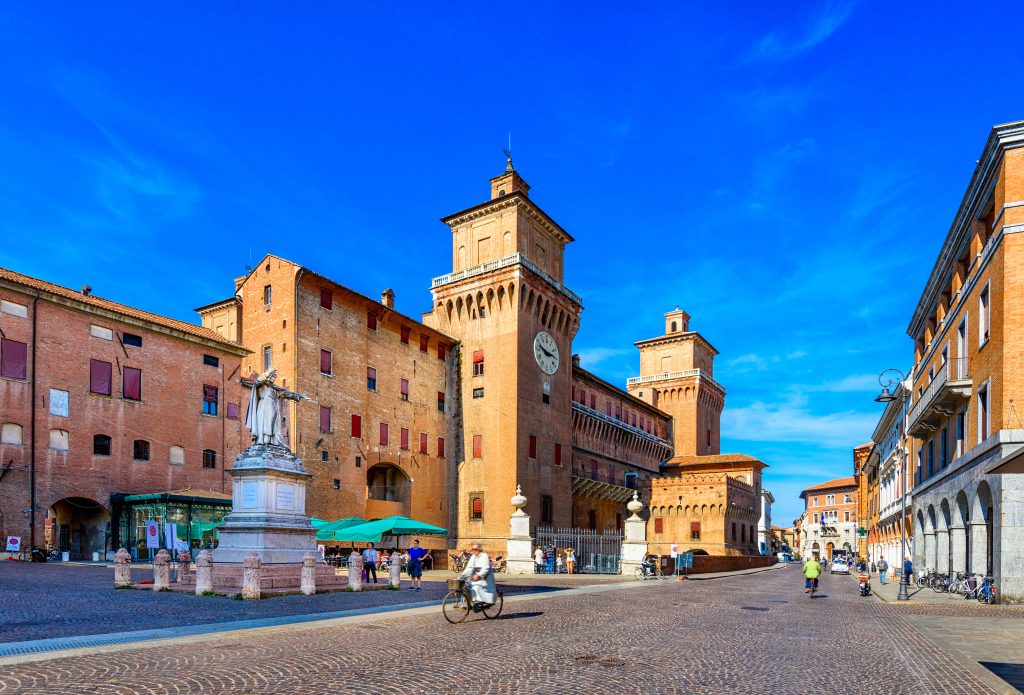

The Heart of Ferrara: Piazza delle Erbe
Next, head to Piazza delle Erbe (now Piazza Trento e Trieste), Ferrara’s central square and a bustling marketplace for over two centuries. This square is a tapestry of Ferrara’s history, home to the Cathedral of San Giorgio and the Palazzo della Ragione. The nearby “listone” offers a spacious area for leisurely strolls and festive markets.
Cathedral of Saint George
Don’t miss the Cathedral of Saint George, a stunning example of religious architecture with elements from various historical periods. The facade and interiors, particularly the Renaissance bell tower designed by Leon Battista Alberti, tell the story of Ferrara through the ages.
Medieval Charm of Via delle Volte
Wander down Via delle Volte, a street that captures the medieval spirit of Ferrara with its characteristic arches. This historic street, once a bustling commercial hub, now offers a picturesque walk through the past.
Corso Ercole I d’Este – A Walk Through Renaissance
From the Estense Castle, find your way to Corso Ercole I d’Este, one of Europe’s most beautiful avenues, lined with Renaissance palaces and devoid of commercial disruption. The Quadrivio degli Angeli, with its remarkable buildings like the Palazzo dei Diamanti, marks a highlight of this avenue.
Palazzo dei Diamanti
The Palazzo dei Diamanti is known for its unique façade of over 8,500 diamond-shaped marble blocks. It houses the National Gallery, featuring art from the 13th to 17th centuries, and the Modern and Contemporary Art Galleries. Even if you skip the interior, the building itself is a must-see.
City Walls – A Scenic Walk
Ferrara is encircled by 8 kilometers of ancient walls, one of Italy’s most intact Medieval/Renaissance defenses. These walls now serve as a popular spot for walking and cycling, offering great views of the city and beyond.
Culinary Delights of Ferrara
For a taste of local cuisine, try the traditional macaroni topped with ragù, mushrooms, or truffle. Don’t miss the salama da sugo, a rich pork sausage, or the marinated eel, a local delicacy. Pair your meal with “coppia,” the unique Ferrarese bread.
Osteria Al Brindisi – The World’s Oldest Tavern
Enjoy a meal at Osteria Al Brindisi, recognized by Guinness as the world’s oldest tavern. Located at Via Adelardi, 11, it has served patrons like Copernicus and Titian since the 1100s.
Additional dining options:
- Osteria La Compagnia (Piazza Sacrati, 32): Known for its warm ambiance and exquisite dishes such as pappardelle with sausage and truffle butter.
- Trattoria da Noemi (Via Ragno, 31): A favorite among locals, offering specialties like fried zucchini flowers and pumpkin cappellacci.
Your visit to Ferrara will be a deep dive into the layers of history, art, and culinary traditions that make this city a treasure of the Emilia-Romagna region.
DAY 4 – ROCCHETTA MATTEI and DOZZA IMOLESE
Morning Visit to Rocchetta Mattei
Start your day with a visit to an extraordinary architectural marvel near Grizzana Morandi, a few kilometers from Bologna. Rocchetta Mattei is a castle that uniquely blends medieval and Arab-Moorish styles. Built in the second half of the 19th century by Count Cesare Mattei, an innovative scholar and homeopath, the castle was intended as the headquarters for his new medical discipline. The structure is a complex maze of towers, monumental staircases, reception rooms, and private spaces reflecting various styles from different eras. To visit, renting a car is advisable due to its location in the Bolognese Apennines. Tours are available on weekends with a guide leading groups through this fascinating castle. For exclusive weekday visits, bookings can be made directly through the castle’s website: Rocchetta Mattei.
Lunch Options
For lunch, you can either return to Bologna or enjoy local cuisine at “Il Sambuco al sole” in Grizzana Morandi, offering a delightful dining experience in a picturesque setting. More information and reservations can be found here: Il Sambuco al Sole.
Afternoon in Dozza Imolese
In the afternoon, head to the charming hilltop town of Dozza Imolese, about 35 km from Bologna. Home to just 1,000 residents, Dozza is renowned for its vibrant murals that adorn the town, turning it into an open-air art gallery. These artworks began with the Biennial of Murals in the 1960s, which attracts hundreds of contemporary artists. If visiting in early September during odd years, you might catch artists painting new murals. Don’t miss exploring the medieval Sforza Fortress, which houses an art gallery and the Regional Wine Shop. This fortress is a treasure trove for wine enthusiasts, offering over 1,000 labels from more than 200 regional producers. Visit the Wine Bar in the fortress’s underground for tastings and to enjoy local wines paired with traditional regional snacks.
Wine shop and wine bar hours
- Wine Shop: Open Tuesday to Friday from 9:30 am to 1:00 pm and 3:00 pm to 7:00 pm; Saturdays, Sundays, and public holidays from 10:00 am to 1:00 pm and 3:00 pm to 7:00 pm.
- Wine Bar: Open Sundays from 3:00 pm to 6:45 pm; closed on Mondays.
This day offers a blend of architectural wonder, artistic exploration, and culinary delights, making it a perfect addition to your itinerary near Bologna.
DAY 5, 6 and 7 – MODENA
Getting to Modena
Today, head to Modena, where you can spend the next two days soaking in the city’s rich culture and history. Traveling by train from Bologna is convenient with departures every 20-30 minutes, and the journey takes about 20 minutes. Alternatively, renting a car might be more practical, especially if you plan to explore nearby areas.
Accommodation in Modena
Consider staying at Hotel Castello, an elegant, castle-style former noble residence located 4 km from the historic center of Modena. This hotel offers quiet accommodations, elegant rooms, a private garden, and complimentary bike rentals. More details and booking options are available on their website: Hotel Castello.
Exploring Modena’s Rich Historical Tapestry
Modena’s history is palpable in its ancient cathedral, the towering Ghirlandina, and the grand Palazzo Ducale. Start at the UNESCO-listed Cathedral of Modena in Piazza Grande, renowned for its Romanesque architecture, majestic facade, and ornate interiors. Next to it stands a historic clock tower in the Comune di Modena, surrounded by cafes and restaurants.
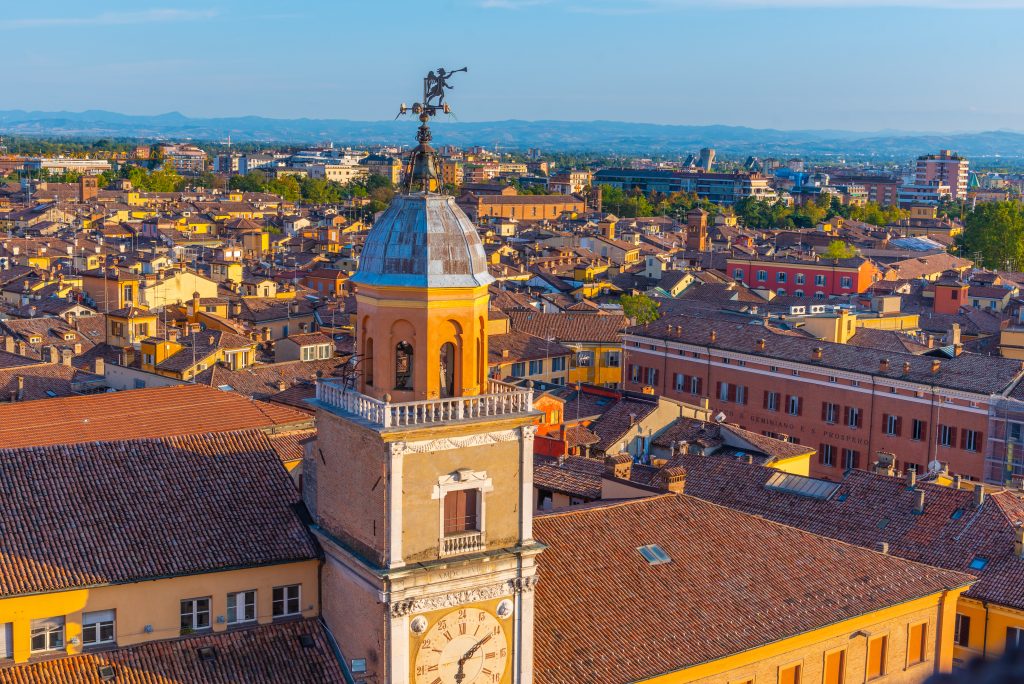

Climb the Ghirlandina Tower
The Torre Ghirlandina, standing at 86 meters, is not only Modena’s tallest structure but also an iconic symbol of the city. Constructed in 1179, the tower offers breathtaking views of Modena and its surroundings. Visitors can climb the tower for a small fee to experience these fantastic vistas.
Palazzo Ducale: A Testament to Modena’s Ducal Heritage
In Piazza Roma, visit the imposing Palazzo Ducale. Originally built in the 1400s as a residence for the Este Dukes, this palace features a baroque facade and is one of Modena’s most significant buildings. Although it now houses part of the Italian Military Academy, its architectural beauty is unmatched.
Market Visit: Albinelli Market
Experience local life at the Albinelli Market, located in a beautiful iron and glass structure on Via Luigi Albinelli. Similar to markets in Barcelona and Madrid, it was declared a national historical monument in 1997. Here, you can explore stalls bursting with regional food and wine, engaging in the lively atmosphere of this historic market.
Gastronomic Delights of Modena
Modena is famous for its rich culinary offerings. Sample traditional dishes like fried gnocco, crescentine, and corn flour polenta. Don’t miss the borlenghi and castagnaccio, along with renowned local products like Parmigiano-Reggiano cheese and Modena Ham. Be sure to pair your meals with Lambrusco, the typical wine of the Modena area, known for its vibrant ruby color and floral aromas.
Winery Tour Recommendation
Enhance your visit with a tour of Fattoria Moretto, a local winery in Castelvetro di Modena. Pre-book a guided tour to learn about vineyard management, wine production, and enjoy tastings of wines paired with salami and Parmigiano Reggiano cheese. Tours are available Monday to Saturday from 10:00 to 17:00. For more details, visit: Fattoria Moretto.
Discover Traditional Balsamic Vinegar
Explore the production of traditional Balsamic Vinegar of Modena at a local acetaia. Tours are available at the Acetaia in San Prospero, where you can witness the aging process in ancient barrels and taste different balsamic vinegar varieties. Visits are recommended by appointment, and more information can be found here: Acetaia del Cristo.
Enjoy your stay in Modena, where history, culture, and gastronomy blend seamlessly to offer a memorable Italian experience.
Luciano Pavarotti’s Home Turned Museum
If you have some spare time, consider visiting the final home of the legendary tenor Luciano Pavarotti, now a museum. Located 8.5km southeast of Modena, this intimate museum offers 40-minute self-guided audio tours in nine languages. Highlights include Pavarotti’s private living spaces and personal items from icons like Frank Sinatra and Princess Diana. Visit Casa Museo Luciano Pavarotti for more information.
Ferrari’s Heart in Maranello
Modena is also synonymous with Ferrari, one of Italy’s most prestigious automotive brands. Visit the Ferrari Museum in Maranello to explore exhibits of cars, trophies, and historical images that chronicle Ferrari’s success in automotive and racing industries. Don’t miss the new Hall of Victories, showcasing recent Scuderia triumphs. For details, visit Ferrari Museum, Maranello and Casa Museo Enzo Ferrari.
Driving a Ferrari or Lamborghini in Maranello
For a truly unforgettable experience, take the wheel of a Ferrari or Lamborghini on the streets of Maranello or the winding roads of the Modena Apennines. Test drives on the track are also available, allowing you to unleash the full potential of these iconic cars. Prices start from €120. Simulated F1 driving experiences are also available for €20. Visit MotorSport Maranello to book your adventure.
Relaxing Day in Castelvetro
Cap off your visit with a day in Castelvetro, a quaint town 18 km from Modena known for its scenic vineyards and the production of Lambrusco and Traditional Balsamic Vinegar. The heart of the town is Roma Square, surrounded by historic buildings like Palazzo Rinaldi and the Clock Tower. Don’t miss the Municipal Wine Shop where you can taste and purchase local Emilian and Romagna wines, as well as other regional products.
Historical Castle of Levizzano
In nearby Levizzano Rangone, visit the castle of Levizzano, dating back to the late 9th century. This castle has evolved from a fortress to a noble residence over the centuries. Inside, the “Rooms of the Bishops” feature Renaissance frescoes. The castle also hosts a fascinating Wine Museum, adding another layer of historical allure to your visit. For more information, check out Castello di Levizzano.
Nature Trails around Castelvetro
The hills around Castelvetro, lined with vineyards, are perfect for nature lovers. Explore six different trails on foot or by bike, discovering the cultural, historical, and architectural gems of the area. These paths offer a journey through beautiful landscapes punctuated by historic buildings and lush woods.
This two-day itinerary provides a deep dive into the rich culture, history, and thrilling experiences Modena and its surroundings have to offer. From high-speed adventures to tranquil walks through medieval towns.
Contact us
Ready to uncover the rich history and flavors of Bologna? Let us take you on a journey through this enchanting city! Contact us today to book your personalized tour and immerse yourself in the vibrant culture and hidden gems that only the locals know. Don’t just visit Bologna—experience it with us.
